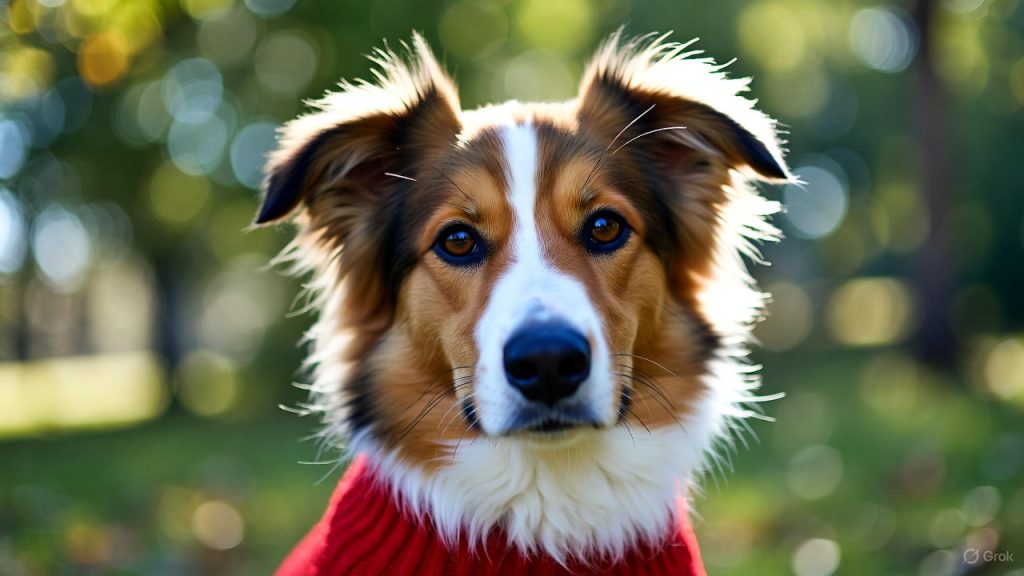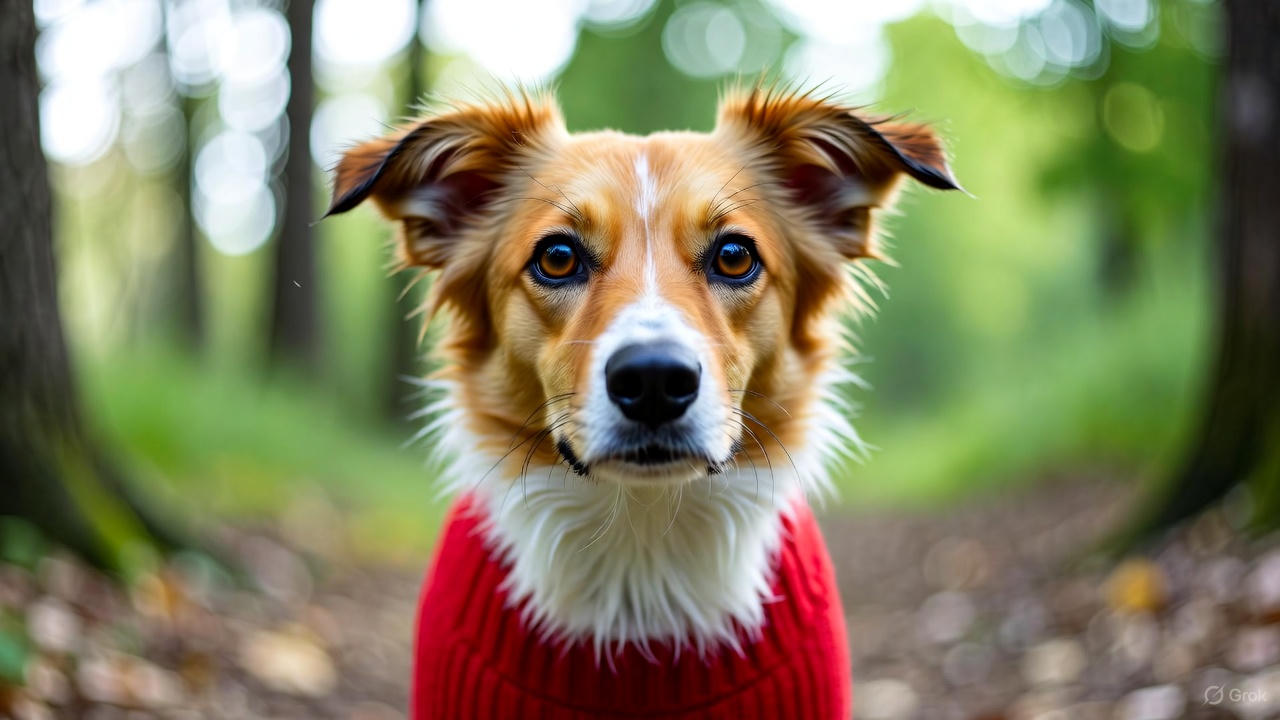How to Tell If a Dog Is Cold?
Winter brings snow, cozy nights, and plenty of cold weather. You bundle up in layers before heading outside. But what about your furry friend? Dogs can get cold just like humans do, and knowing the signs helps keep them safe and comfortable.
Many pet parents assume their dog’s fur coat protects them from all cold temperatures. This isn’t true. Dogs feel the cold, and some breeds struggle more than others. Small dogs, puppies, senior dogs, and certain breeds need extra protection during chilly weather.
This guide shows you exactly how to recognize when your dog feels cold. You’ll learn the warning signs, understand which dogs are most vulnerable, and discover practical ways to keep your pup warm and happy.
Physical Signs Your Dog Feels Cold
Dogs can’t tell us when they’re uncomfortable. They show us through their body language and behavior. Learning these signals helps you respond quickly.
Shivering and Trembling
The most obvious sign appears when your dog starts shivering. Just like people, dogs shiver to generate body heat. You’ll notice their whole body shaking, or sometimes just their legs trembling.
Shivering usually starts as a mild response to cold temperatures. If your dog shivers continuously, they’re telling you they need warmth right away. Don’t ignore this signal. Prolonged shivering can lead to hypothermia.
Some dogs shiver for other reasons too. Anxiety, excitement, or pain can cause trembling. Pay attention to the context. If your dog shivers outside on a cold day but stops once inside, the cold is the culprit.
Hunched Posture and Tucked Tail
Cold dogs change their posture to conserve heat. Your dog might hunch their back, tuck their tail between their legs, and pull their ears back. This position makes them look smaller and more compact.
The tucked tail helps protect sensitive areas from cold air. When dogs feel comfortable and warm, their tails stay in a natural position. A tail that stays tucked during outdoor time in winter signals discomfort.
You might also see your dog holding up their paws. Cold ground hurts their paw pads. They’ll lift one paw at a time or do a little dance. This behavior means the temperature is too cold for them.
Sluggish Movement and Lethargy
Cold temperatures slow dogs down. Your usually energetic pup might move slowly, reluctant to walk or play. They conserve energy when their body works hard to stay warm.
Dogs who normally love their walks might resist going outside. They might stop frequently during walks or turn back toward home. This behavior change tells you they’re uncomfortable.
Inside, a cold dog often seeks out warm spots. They’ll curl up near heaters, burrow under blankets, or press against you for warmth. While dogs naturally seek cozy spots, excessive heat-seeking behavior indicates they’re too cold.
Changes in Breathing
Watch your dog’s breathing pattern. Shallow, slow breathing can signal that your dog feels cold. Their body slows down metabolic functions to conserve energy.
Some dogs might breathe faster as they shiver, trying to generate warmth. Rapid breathing combined with shivering means your dog needs immediate warming.
Whining or whimpering often accompanies cold-related discomfort. Your dog might vocalize more than usual during cold weather. They’re trying to communicate their distress.
Skin and Coat Changes
Your dog’s skin and coat reveal important information about their body temperature.
Cold Ears and Paws
Touch your dog’s ears. Cold, almost icy ears indicate your dog’s body temperature has dropped. The extremities lose heat first. Ears feel cold before the rest of the body shows major signs.
Check their paw pads too. Cold paw pads or paws that feel ice-cold need attention. The pads can even develop frostbite in extreme conditions. Healthy paw pads should feel cool but not freezing.
Run your hands along your dog’s body. If their chest, belly, or back feels cold to the touch, they’ve been cold for too long. The body core should stay warm even when extremities feel cool.
Dry, Flaky Skin
Cold weather and indoor heating create dry conditions. Your dog’s skin might become dry and flaky. While this isn’t a direct sign of feeling cold, it shows winter conditions affect them.
Dry skin can crack and cause discomfort. Your dog might scratch more often. The combination of cold outdoor temperatures and dry indoor heat creates skin problems.
Regular grooming helps you monitor skin condition. Run your fingers through their coat. Healthy skin feels supple and smooth. Dry, tight skin needs moisturizing care.
Behavioral Changes That Signal Cold
Dogs communicate through behavior. Cold discomfort triggers specific actions and reactions.
Seeking Warmth Constantly
A cold dog becomes obsessed with warmth. They’ll squeeze into tight spaces, bury themselves under blankets, or lie directly on heating vents. This isn’t just comfort-seeking—it’s a survival response.
Your dog might follow sunny spots around the house. They’ll move from window to window, chasing the warmth. Outside, they might refuse to leave sunny patches during walks.
Dogs also cuddle more when cold. If your independent pup suddenly becomes clingy, temperature might be the reason. They use your body heat to stay warm.
Refusing to Go Outside
Dogs who love outdoor time might suddenly resist leaving the house. They’ll plant their feet at the door, pull back on the leash, or run back inside immediately after going out.
This refusal isn’t stubbornness. Your dog tells you they’re uncomfortable. Some dogs will still go outside but eliminate quickly and rush back inside.
Bathroom breaks become rushed. Instead of sniffing around and exploring, your dog does their business and heads straight for the door. This behavior change signals they find the outdoor temperature unpleasant.
Anxiety and Restlessness
Cold stress causes anxiety in some dogs. They might pace, whine, or seem unable to settle down. The discomfort prevents them from relaxing.
You might notice your dog can’t get comfortable. They’ll change positions frequently, unable to find a warm, cozy spot. This restlessness increases as they get colder.
Some dogs become more vocal. They’ll bark, whine, or howl more than usual. This vocalization expresses their discomfort and asks for help.
Which Dogs Get Cold Easily?
Not all dogs handle cold weather the same way. Several factors determine how well your dog tolerates low temperatures.
Size Matters
Small dogs lose body heat faster than large dogs. Chihuahuas, Yorkshire Terriers, and toy breeds have less body mass to generate and retain heat. Their small size means a larger surface-area-to-volume ratio.
These tiny dogs need extra protection even in mildly cold weather. What feels cool to a German Shepherd might feel freezing to a Papillon. Small dogs often need sweaters or coats for winter walks.
Puppies also struggle with temperature regulation. Their small bodies and developing systems can’t maintain warmth as effectively as adult dogs. Never leave puppies outside in cold weather for extended periods.
Coat Type and Thickness
A dog’s coat determines their cold tolerance. Breeds with thick, double coats like Huskies, Malamutes, and Saint Bernards thrive in cold weather. Their dense fur provides excellent insulation.
Short-haired breeds feel the cold quickly. Greyhounds, Pit Bulls, Boxers, and Dobermans have thin coats that offer minimal protection. These dogs need coats or sweaters in winter.
Single-coated breeds lack the insulating undercoat. Even medium-sized dogs with single coats can get cold. Poodles, Maltese, and similar breeds need winter gear.
Recently groomed dogs feel colder too. If you’ve clipped your dog’s coat for grooming, they’ve lost their natural insulation. Give them extra protection until their coat grows back.
Age and Health Status
Senior dogs can’t regulate body temperature as efficiently as younger dogs. Their metabolism slows down, producing less body heat. Older dogs often develop arthritis, which cold weather aggravates.
Elderly dogs need shorter walks in cold weather. They tire easily and feel the cold faster. Provide warm beds and keep indoor temperatures comfortable.
Sick dogs or those with health conditions struggle with cold. Dogs with heart disease, kidney disease, diabetes, or hormonal imbalances can’t maintain body temperature properly. Consult your vet about special cold-weather precautions for dogs with health issues.
Underweight dogs have less body fat for insulation. Dogs recovering from illness or those with poor nutrition feel cold more easily. Work with your vet to reach a healthy weight.
Body Fat and Muscle Mass
Body fat provides insulation. Dogs with healthy body fat handle cold better than very lean dogs. Athletes like racing Greyhounds have minimal body fat and need protection.
Muscle mass generates heat. Active, muscular dogs stay warmer than sedentary dogs. Regular exercise helps dogs maintain the muscle that produces body heat.
Very overweight dogs might seem better insulated, but obesity creates other health problems. Aim for a healthy weight where your dog has some insulation without excess fat.

Temperature Guidelines for Dogs
Understanding safe temperature ranges helps you make smart decisions about outdoor time.
General Temperature Rules
Most dogs feel comfortable in temperatures above 45°F (7°C). Between 32°F and 45°F (0°C to 7°C), small dogs, puppies, and thin-coated breeds need protection.
Below 32°F (0°C), monitor all dogs carefully. Short outdoor bathroom breaks are fine, but limit playtime. Very small dogs and puppies should only go out for quick bathroom breaks.
Below 20°F (-7°C), even cold-tolerant breeds should have limited outdoor time. Watch for signs of discomfort. At these temperatures, frostbite and hypothermia become real risks.
Wind chill makes everything worse. Strong winds increase heat loss dramatically. A 30°F day with high winds feels much colder than a calm day at the same temperature.
Wet conditions amplify cold. Rain or snow soaking your dog’s coat removes its insulating properties. Wet dogs get cold much faster than dry dogs at the same temperature.
Monitoring Outdoor Time
Set time limits for cold-weather outings. Small dogs should stay outside for 10-15 minutes maximum in freezing temperatures. Larger, well-coated dogs can handle 30 minutes to an hour.
Always supervise your dog during cold weather. Don’t leave them unattended outside. Things can go wrong quickly when temperatures drop.
Watch your dog’s behavior during outdoor time. If they show any signs of cold, bring them inside immediately. Don’t push through walks if your dog clearly wants to go home.
Plan walks during warmer parts of the day. Midday temperatures are usually highest. Morning and evening walks expose your dog to the coldest conditions.
Protecting Your Dog from Cold
Prevention beats treatment. Take steps to keep your dog warm and comfortable all winter.
Proper Clothing
Dog sweaters and coats aren’t just fashion statements. They provide essential warmth for vulnerable dogs. Choose well-fitting clothes that cover the chest and belly.
Waterproof coats work best for wet conditions. They keep your dog dry, maintaining their natural insulation. Fleece-lined options add extra warmth.
Don’t forget paw protection. Dog booties shield paws from ice, snow, and salt. If your dog won’t wear booties, apply paw balm before walks. This creates a protective barrier.
Get your dog used to clothing gradually. Start with short sessions indoors. Reward them for wearing their coat. Most dogs adapt quickly once they associate clothes with warm, comfortable walks.
Indoor Comfort
Maintain comfortable indoor temperatures. Dogs need warm homes just like people do. Keep your thermostat at a reasonable level.
Provide warm bedding. Orthopedic beds with raised sides help dogs curl up and retain heat. Add blankets they can burrow under. Place beds away from drafts.
Heated pet beds work well for senior dogs or those who feel cold easily. These beds provide consistent, gentle warmth. Always supervise heated beds and follow safety instructions.
Create cozy spaces throughout your home. Dogs like having options. Multiple warm spots let them choose their comfort level.
Nutrition and Hydration
Dogs burn more calories staying warm in winter. Some active outdoor dogs need slightly more food during cold months. Talk to your vet about adjusting portions.
Maintain regular feeding schedules. Consistent nutrition helps dogs maintain body condition and energy levels. Quality food supports a healthy coat and skin.
Keep water available always. Dehydration happens in winter too. Dogs need fresh water to maintain all body functions, including temperature regulation.
Don’t let outdoor water bowls freeze. Check them frequently. Indoor water should always be accessible.
Exercise and Activity
Dogs still need exercise in winter. Regular activity maintains muscle mass and generates body heat. Adjust the duration and intensity based on temperature.
Keep your dog moving during outdoor time. Standing still in cold weather causes rapid heat loss. Active walks keep circulation going and body temperature up.
Indoor play helps on extremely cold days. Games of fetch, tug-of-war, or hide-and-seek provide exercise without cold exposure. Mental stimulation games work well too.
Consider indoor dog facilities. Many areas have indoor dog parks, doggy daycares, or training facilities. These let your dog socialize and exercise regardless of weather.
Emergency Situations
Know when cold exposure becomes dangerous.
Recognizing Hypothermia
Hypothermia happens when body temperature drops dangerously low. Early signs include intense shivering, lethargy, and weakness. Your dog might seem confused or disoriented.
As hypothermia progresses, shivering stops. This is dangerous. The body can no longer generate heat through shivering. Your dog’s muscles become stiff, their breathing slows, and they might collapse.
Check your dog’s gums. They should be pink. Pale or blue gums indicate poor circulation and oxygen deprivation. This requires immediate veterinary care.
Take your dog’s temperature if you suspect hypothermia. Normal dog temperature ranges from 101°F to 102.5°F (38.3°C to 39.2°C). Anything below 99°F (37.2°C) is hypothermia. Below 95°F (35°C) is life-threatening.
Frostbite Warning Signs
Frostbite affects extremities first. Ears, tail, paws, and nose are most vulnerable. Frostbitten skin appears pale, gray, or blue. It might feel cold and hard.
As the area thaws, it becomes red and swollen. Your dog will show pain when you touch it. Blisters might develop. Severe frostbite causes tissue death.
Never rub frostbitten areas. This causes more damage. Don’t apply direct heat. Warm the area gradually with lukewarm water or warm towels.
Get veterinary care immediately for suspected frostbite. Early treatment prevents permanent damage. Your vet can assess the severity and provide appropriate treatment.
What to Do
If your dog shows signs of hypothermia or frostbite, act quickly. Bring them indoors immediately. Dry them off if they’re wet. Remove any cold, wet clothing or collars.
Wrap your dog in warm blankets. You can use towels warmed in the dryer. Place warm water bottles wrapped in towels around your dog. Focus on the core body—chest and abdomen.
Offer warm (not hot) water to drink if your dog is conscious and alert. This helps raise body temperature from the inside. Don’t force water if your dog won’t drink.
Call your vet right away. Describe the symptoms and how long your dog was exposed to cold. Follow their instructions. Many cases need professional medical care.
Transport your dog to the vet keeping them warm. Maintain the warming measures during travel. Time matters with hypothermia and frostbite.
Living with Cold-Sensitive Dogs
Some dogs need special consideration year-round.
Daily Routines
Adjust your daily schedule for your dog’s needs. Plan walks during the warmest parts of the day. Keep morning and evening bathroom breaks brief.
Have indoor backup plans. Teach your dog indoor games and activities. This ensures they get mental and physical stimulation on extremely cold days.
Create a cold-weather kit. Keep dog coats, booties, towels, and paw balm by the door. Being prepared makes cold-weather outings smoother.
Monitor weather forecasts. Plan your dog’s activities around predicted temperatures. Cancel or postpone outings when conditions become dangerous.
Building Cold Tolerance
Healthy dogs can build some cold tolerance gradually. Start with short exposures to cool temperatures. Slowly increase duration as your dog adapts.
Never force adaptation. If your dog shows signs of cold, bring them inside. Pushing through discomfort doesn’t build tolerance—it causes stress and health risks.
Maintain your dog’s fitness. Regular exercise throughout the year helps dogs maintain the muscle mass that generates heat. Fit dogs handle cold better than sedentary ones.
Keep your dog’s coat healthy. Regular grooming, proper nutrition, and skin care maintain the coat’s insulating properties. A healthy coat provides better protection.
Final Thoughts
Your dog depends on you to recognize when they’re cold. Pay attention to the signs. Shivering, hunched posture, cold ears and paws, and behavior changes all tell you your dog needs warmth.
Small dogs, puppies, seniors, and short-haired breeds need extra care in cold weather. Know your dog’s individual tolerance. What works for one dog might not work for another.
Protect your dog with appropriate clothing, limited outdoor time, and warm indoor spaces. Stay alert for signs of hypothermia and frostbite. Quick action prevents serious health problems.
Cold weather doesn’t mean you and your dog can’t enjoy winter. With proper precautions, many dogs love playing in snow and enjoying winter walks. Just stay aware of their comfort level and respond to their signals.
Trust your instincts. If you think your dog looks cold, they probably are. Bring them inside, warm them up, and adjust your plans. Your dog’s health and comfort should always come first.
Winter can be a wonderful time for you and your furry friend. Cozy nights curled up together, watching snow fall outside, create precious memories. Just make sure those outdoor adventures stay safe and comfortable for your four-legged companion.




